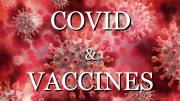Playback speed:
18th century economist Thomas Malthus seeded the narrative about the need for population control, arguing that population growth must be curtailed so as not to surpass the available food supply, lest we all die from starvation and strife. Examine the societal shifts, population control agendas and their potential consequences that shaped the development and widespread use of birth control pills.
This Analysis by Dr. Joseph Mercola has been FACT CHECKED ü
STORY AT-A-GLANCE
- One of the properties of estrogens is their ability to increase the cells’ ability to hold water, which is why women with estrogen dominance are prone to edema (water retention). Cellular swelling is both a characteristic of the cellular stress response and a signal for cellular proliferation. Cellular swelling and proliferation are also hallmarks of cancer
- Estrogen has been shown to replicate the shock phase of the stress reaction in animals
- Progesterone, a progestational molecule, nourishes the embryo and is essential to prevent miscarriage. It’s also an antistress molecule and anti-estrogenic
- Synthetic progestins, while having some of the activity of progesterone, do not have the same physiological effects as endogenous progesterone. In fact, in some cases, they can have the opposite effect
- The 1965 to 1985 Coronary Drug Project found that Premarin, a weak estrogen, increased cancer, heart disease and mortality rates. The Nurses’ Health Study, which began in 1976, found that hormone replacement therapy (HRT) increased the risk of ischemic stroke and cancer, and the Framingham Heart Study showed an increased risk of heart disease for estrogen users
- The Women’s Health Initiative, which began in 1991, found women who used either Premarin alone or in combination with Provera, the synthetic progestin used in birth control shots, had elevated rates of vascular diseases, cognitive decline, cancers and more
The video above reviews the shady backstory of the birth control pill, the roots of which can be traced back to the eugenics and population control movements. As noted in this video, birth control pills do not “just prevent ovulation by mimicking hormones.” They do a whole lot more. They also destroy women’s health.
Estrogen and Progesterone
Chapter 1 of the video reviews the biological roles of estrogen and progesterone, the two sex hormones associated with contraception. While estrogen is routinely referred to as “the female hormone,” this is misleading, as it’s not exclusive to women. Moreover, there’s not just one estrogen but several.
Estrogens do play a role in female sexuality and reproduction. The word originates from “estrus,” which signifies an animal’s receptivity to being mounted by a male.
In the early 1900s, the use of animal tissues and substances to correct deficiencies in humans started taking off. For example, we discovered we could use insulin from dogs and thyroid hormones derived from porcine tissue to treat diabetes and hypothyroidism.
Estrogen and progesterone were also initially isolated from animal tissue, but it was difficult, time-consuming and costly. One ton of animal organs were required to obtain a single gram of progesterone, forcing researchers to start looking for alternatives, as a therapeutic daily dose of progesterone is typically 30 mg. As explained in the video:
“In the coming decades, the pursuit to create synthetic analogues of these hormones was driven by the pharmaceutical industry’s idea that they would have many beneficial effects for women: restoring their youth and fertility and, of course contraception, just to name a few.
However, various esteemed academics warned about the potential of estrogens to cause cancer and other health issues, heavily cautioning its use even at low doses.
It was already shown in the 1930s that the very estrogen that was set to be marketed as a method to prevent miscarriages, known as DES [diethylstilbestrol, a synthetic estrogenic compound], was capable of inducing miscarriage or abortion in animals even at small doses … It was also known to cause a host of other problems, including cancer, in animals as well.”
The Physiological Role of Estrogen
One of the properties of estrogens is their ability to increase the cells’ ability to hold water, which is why women with estrogen dominance are prone to edema (water retention). Cellular swelling is both a characteristic of the cellular stress response and a signal for cellular proliferation.
During the follicular phase of the menstrual cycle, estrogen stimulates the uterine lining and follicles to swell and multiply in preparation for the fertilization of an egg. Similarly, during and after pregnancy, breast tissue swells and grows larger to facilitate milk production.
But cellular swelling and proliferation is also a hallmark of cancer. Indeed, the word oncology comes from the Greek word “oncos,” which simply means swelling.
In his 1997 book, “From PMS to Menopause: Female Hormones in Context,”1 biologist Ray Peat2 stated that estrogen had been shown to replicate the shock phase of the stress reaction in animals. According to Peat, the physiological purpose of estrogens is to stimulate cell division by triggering water uptake by the cell.
Peat also suspected that estrogen was a metabolic inhibitor that slows down energy production in the cell. Otto Warburg, after whom the Warburg Effect was named, stated that “the prime cause of cancer is the replacement of the respiration of oxygen in normal body cells by a fermentation of sugar.”
In simpler terms, this is when your body has more than enough oxygen to burn (oxidize) glucose in your mitochondria but instead shuttles glucose outside the mitochondria into the cytoplasm to oxidize or burn in glycolysis and produce lactate. This is the classic form of energy production in cancer cells.
It is not that cancer burns sugar for fuel; it is that cancer burns glucose inefficiently in glycolysis and not mitochondria, despite having enough oxygen present. This is typically due to mitochondrial metabolic dysfunction.
Essentially, this means anything that limits or prevents your cells’ ability to efficiently burn glucose in your mitochondria is capable of causing cancer, and according to Peat, estrogen may be doing just that. As noted in the video:
“These properties of estrogen are often overlooked, as research narrowly tends to focus on the actions of cell receptors. However, it’s been shown that cancers that do not contain receptors for estrogen still grow when exposed to estrogen, and subside when estrogen is lowered, so the actions of receptors cannot explain everything.”
The Physiological Role of Progesterone
Progesterone and estrogen are antagonists, meaning progesterone is anti-estrogen and estrogen is antiprogesterone. Progesterone, a progestational molecule, nourishes the embryo and is essential to prevent miscarriage. However, because it signals that your body is already pregnant, which prevents ovulation, it also acts as a contraceptive. This makes perfect sense if you think about it.
Once you’re pregnant, you cannot ovulate and get pregnant again until after the pregnancy is completed. It’s not the absolute amount of progesterone that counts, though. Rather, it’s the ratio of progesterone to estrogen that determines their effects.
The Estrogen Explosion
Menopause used to be viewed as a natural part of a woman’s life cycle. Sometime after the age of 50 or so, women stop menstruating and are no longer fertile. Rarely, if ever, was this considered a condition that needed treatment.
That started to change in the early 1940s with the advent of DES, the first estrogenic compound used to protect against miscarriages in women with a history of fetal loss and to “revitalize” women who were past their prime. As explained in the video:
“The first estrogen to be used as a drug, DES, was not patented. Due to this, there was no incentive for the companies to compete against one another to sell it.
By instead colluding together, these companies were able to successfully lobby the FDA, and in 1941 DES was approved for therapy of menopause, now under the elegant name of menopausal hormone replacement therapy or HRT, a landmark moment in history that essentially birthed ‘Big Pharma’ as we know and hate today …
Women were now told they could restore their youth: increasing their energy for chores, their attractiveness and their sex drive. This was true to an extent. Estrogen had been recognized to be a powerful stimulant and brain excitant, again characteristic of stress and shock.”
Since then, many synthetic compounds, especially plasticizing compounds, have been developed that have estrogenic properties. Today, we know them as endocrine disruptors or xenoestrogens. DES, the first endocrine-disrupting chemical, is strikingly similar in composition to bisphenol-A (BPA), which the FDA banned for use in baby bottles and sippy cups in 2012.3
Many pesticides, preservatives, organic pollutants, drugs and even textiles also have estrogenic activity. Polyester, for example, mimics estrogen, and in one study, eight female dogs dressed in polyester dog clothing became unable to reproduce, due to insufficient progesterone levels.
Plants can also have estrogenic activity and are known as phytoestrogens. Interestingly, it’s been proposed that one of the roles of phytoestrogens is to discourage herbivores from eating them by inhibiting their reproduction. Clover, for example, can cause permanent infertility in sheep, and this has been known since the 1930s.
How Estrogen Works in Contraceptives
In his Ph.D. thesis, “Age-Related Oxidative Changes in the Hamster Uterus,”4 Peat detailed the effects of estrogen on aging, menopause, stress and fertility. He found that older animals had insufficient amounts of oxygen in the uterus to keep the embryo alive long enough for successful implantation, and younger animals given estrogen experienced the same problem.
As a result, Peat argued that estrogen prevents implantation of the embryo by reducing oxygen in the uterus. What’s more, a sufficiently large dose can kill the embryo or fetus at any stage of the pregnancy. On the flip side, he found that older animals that would normally be infertile due to age remained fertile when given a supplement of vitamin E and progesterone. As noted in the video:
“Mifepristone, also known as the abortion pill, actually works by blocking the effects of progesterone, which means it effectively enhances the effect of estrogens. Of course, now mifepristone is making national headlines for its highly questionable safety, which seems to be in line with relative estrogenic excess and progesterone deficiency.
It’s likely that we are now seeing history repeat itself, as childbirth is becoming medicalized, and women are being experimented on with estrogenic pharmaceuticals for greater agendas.”
Synthetic Progestins — A Timeline
In 1943, chemist Russell Marker started extracting progesterone from wild Mexican yams. However, progesterone is poorly absorbed when taken orally, so women had to take inconveniently large doses.
In 1951, Syntex S.A (later acquired by Roche) developed norethindrone, the first synthetic progestin (progesterone analogue). A year later, G. D. Searle (now a Pfizer subsidiary), came up with its own synthetic progestin, called norethynodrel. Both norethindrone and norethynodrel are derivatives of testosterone, the primary androgenic hormone.
Syntex and Upjohn Pharmaceutical also co-developed medroxyprogesterone acetate, which is still widely used, both in HRT and contraceptives, including Depo Provera. Ironically, all these progestins received FDA approval for gynecological disorders caused by excess estrogen to begin with.
Synthetic Progestins Do Not Act Like Endogenous Progesterone
Adding insult to injury, synthetic progestins, while having some of the activity of progesterone, do not have the same physiological effects as endogenous progesterone. In fact, in some cases, they can have the opposite effect. As explained in the video:
“Medicine has always taken the approach that synthetic progestins are like progesterone until proven otherwise. As we will continue to see, history has shown us that they should be assumed not to act like progesterone until proven otherwise.
The term ‘progestin’ is only relevant in pharmacology, as a synthetic substance that can bind and activate the progesterone receptors in cells. Due to the prevailing dogma of receptors in biology, this overlap in function has led many to believe they are the same as endogenous progesterone.
Even researchers and large academic institutions have been using the terms progestin and progesterone interchangeably for decades, adding to the confusion.
This is a critical distinction to make, since these compounds [progestins] tend to lower or even completely shut down endogenous progesterone production, leaving estrogen unopposed.”
In the 1950s and ‘60s, for example, medroxyprogesterone acetate was assumed to have no estrogenic effect, which has since been proven false. It potentiates the proliferative effects of estrogen even though it doesn’t activate the estrogen receptor.
Dozens of other synthetic progestins are now on the market, each of which acts on receptors that endogenous progesterone does not. Norethynodrel and norethindrone, for example, have significant androgenic properties, which is not surprising considering they’re both derivatives of testosterone.
Medroxyprogesterone acetate also has androgenic activity, even though it’s derived from progesterone, and it also has affinity for glucocorticoids such as cortisol. Many progestins, including norethynodrel and norethindrone, also bind to and activate the estrogen receptor, and are converted into estrogens! Endogenous progesterone does not do this.
Progesterone Vs. Progestins
On the flipside, natural progesterone has several unique and beneficial effects that synthetic progestins cannot replicate. Importantly, endogenous progesterone is one of your primary anti-stress hormones. As explained in the video:
“Estrogens normally enhance the glucocorticoid response to stress, which had been observed nearly a century ago. Progesterone tends to circumvent this, acting as one of our primary endogenous anti-stress hormones.
Progesterone also antagonizes — and estrogen promotes — the mineralocorticoids, a set of stress hormones that respond to changes in mineral balance and are critical players in the development of high blood pressure.
[T]his is likely one of the reasons why progesterone has demonstrated antihypertensive effects, while the synthetic progestins increase blood pressure. These stress systems play a crucial role in insulin resistance … a root cause of various diseases. This is also why birth control is associated with glucose metabolism issues and weight gain.
Many of the benefits exclusive to progesterone are due to its effects on the brain, which controls many of these downstream processes. In the brain, progesterone — but not the progestins — can be converted into another steroid called allopregnanolone.
Allopregnanolone is known for its stress-reducing properties through the GABA system, and by increasing dopamine, producing relaxation and a clearer state of mind … Meanwhile pharma has been quietly pushing patented versions of allopregnanolone to treat postpartum depression, which is associated with … progesterone deficit …
Going along with this, estrogens are capable of promoting serotonin at every level, and serotonin has an antagonistic relationship with dopamine. This produces symptoms of anhedonia, general numbness and helplessness, and makes people want to give up.
Serotonin is actually named as such because it regulates the tone of the serum, and it was first identified as an inflammatory mediator and vasoconstrictor playing an important factor in blood clotting. One of its original names was enteramine, relating to its inflammatory activity in the GI tract.
Uncoincidentally, synthetic progestins, regardless of which specific type, have been shown to contribute to all of these processes. It should then come as no surprise that the side effects of moodiness, nausea and headaches are present in around one-third of birth control users.”
Estrogen Dominance Can Wreak Havoc
High estrogen also has a negative effect on other organs. In the video, they cite data showing birth control users have a 50-fold higher risk of liver tumors, for example, and a six-fold higher risk of liver cancer. Synthetic progestins are also associated with poorer outcomes for pregnant mothers and their babies — another clue that progestins do not function like progesterone.
For example, low progesterone is a risk factor for autism, and animal studies have demonstrated that offspring of mothers given progestin in lieu of progesterone exhibit autistic traits.
The only thing these two compounds have in common is that they activate the progesterone receptor at relatively similar intensities. The good news is there’s bioidentical progesterone that doesn’t have the downsides of progestin.
The reason drug companies don’t sell it is because they can’t patent it. Health Natura makes a high-quality bioidentical progesterone called Simply Progesterone mixed with vitamin E, which is what Peat also recommended. This is the one I use.
You could theoretically mix 30 mg of USP progesterone powder in one-third of a vitamin E capsule to make sure it is absorbed but, to the best of my knowledge progesterone powder is not available.
The company recommends using 3 drops two to three times a day, but an alternative regimen is to rub 10 drops on the inside of your cheeks about 20 to 30 minutes before bedtime as progesterone will also increase GABA, which improves sleep and also inhibits the production of aldosterone, which can limit the number of times you wake up to urinate.
Social Movements and the Birth of Hormonal Birth Control
During the post-World War II era, the U.S. experienced an unprecedented economic upswing that led to a surge in marriage and birth rates (the baby boom era) as well as industrial growth. Christian family values predominated and there were restrictions on both contraception and abortion.
At the same time, the feminist movement started emerging, with feminist activists encouraging women to enter the workforce rather than being “barefoot and pregnant.” This societal tidal change also aligned with the interests of big business, which saw an opportunity to expand their consumer base by encouraging women to earn their own money. As noted in the video:
“The estrogenic menopausal hormone replacement therapy played a huge role in capitalizing on and fueling the surge in women entering the workforce. However, this proved to be a challenge, particularly for women with children.
Feminists advocated for greater liberation in career choices and expanded contraceptive options. Simone de Beauvoir, a prominent feminist of the time, controversially stated:
‘No woman should be authorized to stay at home and raise her children. Society should be totally different. Women should not have that choice, precisely because if there is such a choice, too many women will make that one.’
The number of working mothers quadrupled between 1940 and 1960. While the motivations of big business benefiting from increased labor and consumption … may seem evident, there were other forces at play behind the scenes.”
Population Control and Eugenics
Two of those forces were the eugenics and population control movements. Thomas Malthus seeded the narrative about the need for population control, arguing that population growth must be curtailed so as not to surpass the available food supply, lest we all die from starvation and strife.
Eugenics was inspired by Charles Darwin’s theory about survival of the fittest and the idea that the evolution of mankind could be directed to achieve the “perfect” human. In fact, eugenics was popularized by Darwin’s cousin, Sir Francis Galton.
Under this ideology, weak and sick individuals, and those lacking desirable genetic traits, should not reproduce and ideally should be disposed of altogether, to speed up the evolution of the “Übermensch” (superman).
Inbreeding within wealthy families is an outgrowth of this ideology, which in many cases have had less than desirable results, as too close a genetic match between parents (such as married cousins) often results in children with intellectual disabilities and health problems that lead to premature death.
Today, eugenics has been rebranded as transhumanism, which sounds more progressive and hides its sinister core. But, just like eugenics, transhumanism is about separating the worthy from the unworthy, and getting rid of the latter as expeditiously as possible.
The technological (and eventually, genetic) upgrades being developed will be for the rich, while the slave class (the population at large) have been placed on a path of devolution and mass infertility, the ultimate goal being our permanent extinction.
Some of the wealthiest individuals on the planet, past and present, have dedicated their lives to the eugenics/transhumanist agenda, and their charitable foundations have funded work in this area for over 100 years. As explained in the video:
“John D. Rockefeller Jr., who had been leading the Rockefeller Foundation since 1897, held a strong interest in eugenics and population control. Rockefeller became involved with the American Eugenics Society and served as a trustee of the Bureau of Social Hygiene.
The research on population control and eugenics set the stage for these ideas to be integrated into American law. Focusing on reproductive health was a primary objective, as court rulings allowed for forced sterilization of the ‘unfit.’
The Rockefeller Foundation ended up being the biggest financial contributor of the Kaiser Wilhelm Institute of Anthropology, Human Heredity, and Eugenics in Berlin throughout the ‘20s and ‘30s. Margaret Sanger, a prominent feminist and the founder of Planned Parenthood, began advocating for birth control in 1916 when she established an illegal clinic in Brooklyn …
Sanger aimed for a more accessible and convenient birth control method. She envisioned a birth control pill that would simplify the practice and began lobbying the government for its legalization through a doctor’s prescription …
While Sanger could not garner much support in the 1940s advocating for women’s rights as a means for promoting birth control, she would get exactly what she needed by aligning with these more popular and lucrative ideologies. She requested contraceptive research funding from the Rockefeller Foundation, who would fulfill Sanger’s request.
The Rockefeller family, spearheaded by John D. Rockefeller, Jr., enthusiastically embraced Margaret Sanger’s controversial work on birth control under the guise of improving maternal and public health.”
Population Control Through Fertility Control
In 1952, John D. Rockefeller III laid the plans for a non-profit organization called the Population Council, which aimed to curb population growth through fertility control. As noted in the video:
“Planned Parenthood, supported by population control advocates, sought to merge the ideas of family planning, eugenics, feminism, and population control seamlessly.
These covert actions aimed to manipulate the prevailing societal norms, transitioning from an era that celebrated robust families with numerous children to one that deliberately hindered population growth. What could be a better way to do this than an introduction of easily accessible birth control methods?”
The video goes on to detail the key characters involved in the development of the first oral contraceptive, and the questionable ethics involved in the choice of ingredients and its testing. For example, the possibility of cancer formation was never investigated, despite the clear risks.
The pill, Enovid, made by G.D. Searle, was approved by the FDA in 1960, even though it had not undergone the required 25 years of safety testing. The FDA approved Enovid using a loophole that allowed drugs to be approved for two-year intervals instead.
In 1963, Ortho Pharmaceutical launched Ortho-Novum, and the next year, Parke-Davis introduced Norlestrin and Syntex launched Noriny.
By the end of 1961, 88% of Planned Parenthood clinics were providing the pill to patients and within five years, an estimated 95% of OB-GYNs were prescribing it to their female patients. By 1966, 71% of Planned Parenthood patients were on the pill. Around the same time, estrogens were also being promoted as a cure for menopause.
Safety Concerns and Shifting Blame
In 1969, Barbara Seaman published the “The Doctor’s Case Against the Pill,” in which she detailed the many health risks of oral contraceptives, such high blood pressure, heart attacks and blood clots. Eventually, a warning label for increased blood clot risk was added, and some brands lowered their dosages but replaced the estrogens with more estrogenic compounds to make up the difference.
By 1976, researchers had established a clear link between menopausal HRT, endometrial cancer and blood clotting disorders. The answer? More warning labels. As HRT sales dwindled, the drugmakers shifted gears and started adding synthetic progestins to the protocol, ostensibly to counteract the side effects of estrogen.
Still, studies kept bringing bad news. The 1965 to 1985 Coronary Drug Project terminated two of its study arms after it was found that Premarin, a weak estrogen, increased cancer, heart disease and mortality rates.
The Nurses’ Health Study, which began in 1976, found that HRT increased the risk of ischemic stroke and cancer, and the Framingham Heart Study, which had begun in 1948, by then also showed an increased risk of heart disease for estrogen users.
Oral contraceptives can also deplete essential nutrients like B vitamins, zinc, selenium, magnesium and vitamin E, the latter of which has anti-estrogenic effects. In 1991, the Women’s Health Initiative, which included tens of thousands of women, was launched. After several years, the dangers of HRT was unmistakable.
Participants were using either Premarin (the weakest estrogen HRT product) alone or in combination with Provera (medroxyprogesterone acetate), the synthetic progestin used in birth control shots. Both interventions were stopped before the study concluded due to elevated rates of vascular diseases, cognitive decline, cancers and more.
In 2000, Yaz came out. Made by Bayer, Yaz contains the synthetic progestin drospirenone and ethinyl estradiol. It was a huge commercial success, but by 2019, nearly 20,000 lawsuits had piled up and the contraceptive had been linked to more than 100 deaths. Bayer ended up paying nearly $2 billion in settlements.
In closing, it’s not just the millions of women who are on contraceptives or HRT who are at risk. Today, an ever-growing number of young boys who feel like girls are also being placed on estrogen therapy under the guise of “gender-affirming care.” The future of these boys may be grimmer than we dare conceive at the moment.
Progestins tend to lower and can completely shut down endogenous progesterone production, leaving estrogen unopposed.





